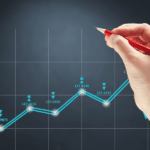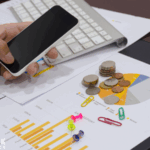The number of car repossessions in the United States has surged to levels not seen in over a decade, reflecting the financial strain many borrowers are experiencing. Rising vehicle prices and elevated interest rates have made it increasingly difficult for consumers to keep up with their auto loan payments. Lenders, in response to growing delinquencies, have been repossessing vehicles at a significantly higher rate. This trend raises concerns about the broader economic impact and the financial well-being of many Americans.
Auto repossessions have experienced fluctuations over the years, with a significant drop during the pandemic due to relief programs aimed at easing financial burdens. However, once these measures ended and inflation escalated, the number of repossessions started to climb again. In previous years, subprime borrowers faced challenges, but the current repossession rate has reached the highest level since 2009, a period marked by the fallout from the 2008 financial crisis.
Why Are More Cars Being Repossessed?
Lenders seized approximately 1.73 million vehicles in 2024, marking a 16% increase from the previous year and a 43% rise compared to two years prior. The combination of high interest rates and increasing car prices has placed many borrowers in a difficult position, making it harder for them to meet their monthly payments. Subprime borrowers, in particular, have been significantly impacted, with the percentage of those at least 60 days behind on their loans reaching a record high of 6.56% in January.
How Have Loan Rates and Credit Access Been Affected?
Auto loan interest rates have also surged, with the average vehicle loan rate rising to 10.16% in February, according to Cox Automotive. As borrowing becomes more expensive, many consumers find it challenging to finance a vehicle purchase. Additionally, data from the Federal Reserve Bank of New York indicates that access to credit has tightened, with rejection rates for auto loans climbing to 33.5%—the highest level recorded since the survey began.
Consumer confidence in future credit accessibility has also declined, with 46.7% of respondents expecting credit conditions to deteriorate further in the next year. Higher car prices and borrowing costs contribute to growing uncertainty among consumers, influencing their financial decisions and spending behavior.
The U.S. Consumer Financial Protection Bureau issued a warning about increasing repossessions earlier this year, emphasizing the financial risks associated with rising auto loan delinquencies. Economic uncertainty and concerns about inflation have further complicated the financial landscape.
“There’s a lot of uncertainty in the market,” QED Investors partner Amias Gerety stated. “Consumers are still spending, but you can see hesitancy creeping in, especially when it comes to big-ticket purchases.”
The increase in car repossessions highlights the financial difficulties many borrowers are facing as they navigate the challenges of high interest rates and inflation. Historically, repossession rates have fluctuated based on economic conditions, but the current trend suggests sustained financial strain for many consumers. Those with subprime credit scores are particularly vulnerable, as they often face higher borrowing costs. Potential buyers should carefully assess their financial situation before committing to an auto loan, while lenders may need to explore alternative solutions to mitigate rising repossession rates. Monitoring these economic trends will be crucial in understanding how financial institutions and policymakers respond to the shifting landscape.










